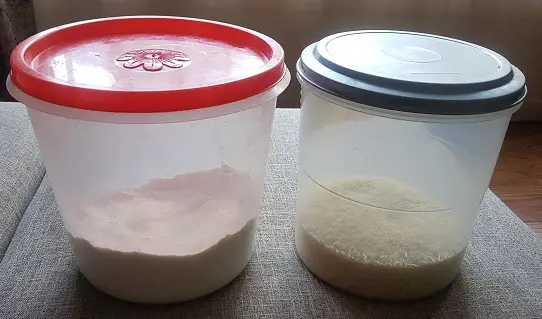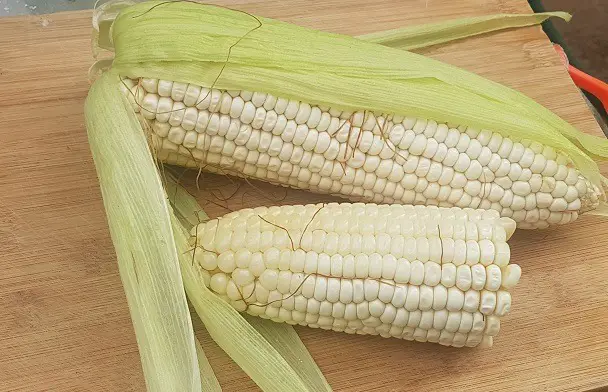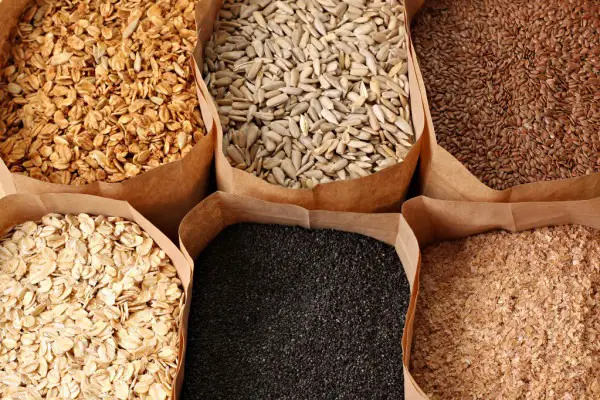Indisputably, every household contains various types of grains in their kitchen. Although perishable, grains can last for long periods if stored accurately.
So, homeowners should devise reliable ways to store their grains. Today, there is a broad spectrum of methods homeowners can use to store grains.
But first, they should ensure the grains are fresh upon purchase. It would help if you bought grains in a grocery store instead of a supermarket.
Beginners find it quite hard to store grains. The majority of people don’t know what types of grains are the best for long storage or how to store them properly.
You will be able to store your grains long term in your house. You can use silica gel desiccants, mylar bags, food grade buckets, oxygen absorbers or vacuum sealers to help in long term storage.
Also, storing grains in the basement, never mixing grains, making your own flour, using labels, rotating grains, and storing your grains at the right levels of humidity and temperature will help in long term storage.
One of the best grains for bulk storing for long periods is rice. You can easily extend its shelf life to more than twenty-five years.
Grains are an important asset; not only can you use them for cooking but also to grow crops. But many people believe that purchasing a few grain bags and throwing them in a garage and or in a basement’s corner is enough lasting storage for the grains.
When you open these bags that aren’t stored properly after only a couple of years, the majority of those grains would be unfit for human consumption.
Make sure you store grains like the way you store any other types of food items in the pantry.
Additionally, some grains are sensitive to high humidity, continuous fluctuations in temperature, not forgetting the many fungi, parasites, and insects that use grains as food.
When there is no electricity like during power outages, grains in your freezer can spoil very quickly because of damage by water from the melting ice.
Once you put a sack of grain in your freezer, the water in them forms ice crystals. The moment they get formed, they have already damaged the grains.
Another big drawback to putting the grains in the freezer is that you have to eat them quite fast once you remove the grains from your freezer.
Also, once out of your freezer, the ice crystals begin to melt. This is a perfect condition for fungus and parasites to grow. It takes less time for the frozen grains to spoil.
Based on the humidity and surrounding temperature, this can take place as fast as a couple of days.
In this article, we look at the various ways to store different types of grains in your kitchen.
This article does not cover storage of grains within a village or farm setting or traditional forms of storing grains such as on timber platforms of traditional gourds or stone bins.
How long can grains last?
Have you ever wondered how to prolong your grains’ shelf life? How to store the grains? Or how long can they last?
There are mainly 2 kinds of grains, hard grains and soft grains.
In general, hard grains have a longer shelf life compared to soft types. However, you can prolong the shelf life of both soft and hard grains for much longer by storing them sufficiently.
If you’re purchasing grains in large quantities in big sacks, these may have many pollutants in them. These can include other kinds of grains to insects, fungus, parasites, and even unhatched eggs.
That is why it’s essential that you store the grains sufficiently regardless of whether you prefer soft or hard grains.
To start with, know about the environmental factors that adversely affect grains and decrease shelf life. These include:
- Moisture
- Heat
- Air
- Critters
Hard grains
These have a thicker outer shell that helps in protecting the actual seed. In general, hard grains are the best kinds of grains to store long term since they aren’t so sensitive.
As long as you keep them in a dry environment, the seed won’t absorb moisture from the atmosphere and begin the process of germination.
The hard shell of hard grains helps when it comes to insects since many insects cannot penetrate the thick outer shell to get the seed.
Additionally, hard grains are safer to keep in a freezer compared to soft types since they have little to no water in them as long as they aren’t fresh and stored sufficiently.
But if the hard types are fresh, they aren’t safe to freeze since the frozen water can damage the seed. Ensure your hard grains are totally dry to kill the insects and parasites living in the bag.
Examples of hard grains include:
- Hard Red Wheat
- Soft Wheat
- Triticale
- Corn
- Kamut
- Hard White Wheat
- Millet
- Special Bake Wheat
- Flax
- Spelt
- Buckwheat
- Durum Wheat
Hard grains can have a shelf life of 10 to 12 years provided that you keep them well. You can also store these grains for up to thirty years or more when you use the right storage method.
Soft grains
Soft grains don’t have a strong outer shell to protect the actual seed. They are very sensitive to water and high humidity.
This is natural for many grains since the seeds can germinate if they are able to absorb water to start the process. That is why soft grains absorb from the air if there’s adequate humidity; this way, they start germination.
Though this is all great from an evolutionary view, you want to prevent the germination of seeds at all cost when it comes to long-lasting storage.
Once germination starts, the seed is almost gone because of plant formation. This initial growing stage of a plant is the most sensitive.
Generally, many garages and basements used for long term grain storage contain adequate humidity to begin the germination process. For this reason, the plants often don’t make it through beyond the first couple of days.
Besides being quite sensitive to humidity, bugs can also eat these grains since they don’t have the outside shell-like hard grains.
Oats are one of the ideal grains you can store long term because of its long shelf life.
Other soft grains that can be stored for a relatively long period of time are:
- Quinoa
- Hulled Oats
- Rye
- Barley
- Rolled Oats
If you store these well, they can offer an 8-year shelf life. When you store grains with the right techniques, you can prolong that shelf life for up to two decades.
Whole-grain vs. refined grain
When storing grains, you should remember that refined grain has a longer lifespan compared to whole grain.
So, in case you buy whole grain, don’t take large portions. They can become rancid over time. Evaluate whole grains carefully before buying them. This way, you can buy them while still fresh.
On the other hand, you can always purchase large amounts of refined grain since they don’t decay quickly.
Storage of whole intact grains: their shelf life, like Quinoa or wheat berries, is longer than flour. If you store intact grains well in airtight containers, they can keep for six months.
They can also last a lot longer on a cool, dry store cupboard shelf or up to 12 months or more in a freezer or a fridge.
Home storage using containers

Grain can always get stored in containers fitted with tight and firm lids. This way, the grain remains fresh for a long time.
Keep the container with the grains in a dark, cool, dry place. Consequently, the grain will be free from any microorganisms. Ensure that you organize your kitchen in a manner that allows for suitable grain storage.
The fridge
You can store your grains in the refrigerator. However, use a tightly sealed container. This way, you prevent the grains from taking in any moisture and odors from other foods. Well, unless the fridge is only for storing grains.
If you want your grains to last for months, keep them in the freezer. The refrigerator is the best place to store cooked grains.
Different types of grains and their storage methods
Amaranth
Use a tightly sealed container to store amaranth. Put the container in a cool, dry, and dark place. As a result, this grain can last for a more extended period.
There are several places you should never store amaranth. They include the oven and dishwasher. Ovens can heat amaranth and lead to quick decay. On the other hand, when stored near the dishwasher, amaranth can absorb moisture and decay.
When stored wrongly, amaranth can develop a strange taste and odor.
Barley
Experts recommend that you should store barley in containers with tight lids. The containers could have glass or plastic materials. Both works well for the grain.
Afterward, place the container in the fridge or freezer compartment. Ultimately, it would be best if you kept barley in a cool area free from moisture. Thus, avoid storing barley near stoves, ovens, and countertop sinks.
When stored properly, barley can last for over ten months. Moreover, during the sunny and hot seasons, place barley in the refrigerator to boost its longevity.
Buckwheat
After buying buckwheat, place it in a tightly fitted container and place it in the refrigerator. Buckwheat does not last for long when placed in warm conditions. They last for about 60 days or more when stored in the refrigerator.
So, when in contact with moisture or warmth, buckwheat can develop weird tastes or smells.
Additionally, when you store buckwheat in the refrigerator, ensure the container has a tight lid. Otherwise, it can absorb flavors and moisture from other foods in the refrigerator.
Corn

Homeowners should store corn on dry shelves with containers. Ensure the storage place of corns is free from moisture and light.
Even so, corn has high longevity. If stored properly, corn can last for more than one year.
Millet
Plastic and glass containers with tight leads are ideal for keeping millet. The containers should have tight lids and get placed in the fridge or refrigerator compartment. You can also place the containers with millet on dry shelves and cabinets.
The method used to store millet significantly affects its lifespan. When placed on kitchen shelves or drawers with tightly sealed containers, the grain can last for over 60 days. On the other hand, millet can stay for more than three months when placed in the fridge.
Ultimately, the grain can stay for six months when you store them in your freezer. Nonetheless, when millet is not stored well, it perishes very quickly.
Oats
One of the most popular grains among homeowners is oats. These grains should get stored in containers with a firm and tight leads.
Ensure you keep them in places free from moisture or light. Oats have antioxidant properties. Thus, they can last for more than 12 months when kept in the right place.
Quinoa
Tightly fitted containers of glass or plastic are the ideal place to keep quinoa. Ensure that quinoa gets stored in places free from light and moisture. Once you do this, the grain can stay for more than a year without becoming rancid.
Rice
Almost all households love rice. So, it is essential to know how to store the grain properly. Homeowners should keep rice in containers with tight lids.
Rice that is not yet cooked should get stored in kitchen cabinets or shelves. These locations should be free from moisture and sunlight. Otherwise, the rice will be liable to quick decay.
On the flip side, keep cooked rice in the freezer. However, cooked rice does not last for long, even when kept in the freezer.
Also, note that brown rice has a shorter lifespan in comparison to white rice.
Wheat
If you have wheat in your house, store it in containers with tight lids. Always keep the wheat away from moisture and warmth.
Additionally, keep the container with wheat in darker places. So, avoid storing wheat on your kitchen countertop or next to your electric cooker.
This grain has a long lifespan and can last for over a year when stored properly.
The best way of storing flour
Locate a dark, cool area
Never leave the flour container out on your kitchen counter. Sunlight and heat will ruin the flour ahead of time. Rather, get a cabinet that is away from the oven and other kitchen hot spots.
Stay away from that paper sack
The simplest way of keeping the flour fresh and stop small insects from entering is by transferring the flour from the paper sack to an airtight glass or plastic container.
Insects like food, particularly healthy whole grain food items, and if they get a way in, they will go for it.
Only purchase what you require
Never get tempted by sales. Try just purchasing as much flour as you think you will utilize over the next couple of weeks.
Flour will attract moisture, meaning it will go bad quite fast. If you can, get the bulk bins at the local store to purchase what you require.
Conclusion
This article shows that all grains should be stored in places far away from sunlight, moisture, and warmth. Otherwise, they will be vulnerable to becoming rancid.
So, if you purchase your grains in bulk, ensure you use the right storage methods to extend your grains’ lifespan. As a result, you will be able to save on your monthly budget.
Take note that whole grains are different from refined grains. Refined grains stay longer than whole grains. Ultimately, always ask your grain supplier to advise you on the best storage techniques.

